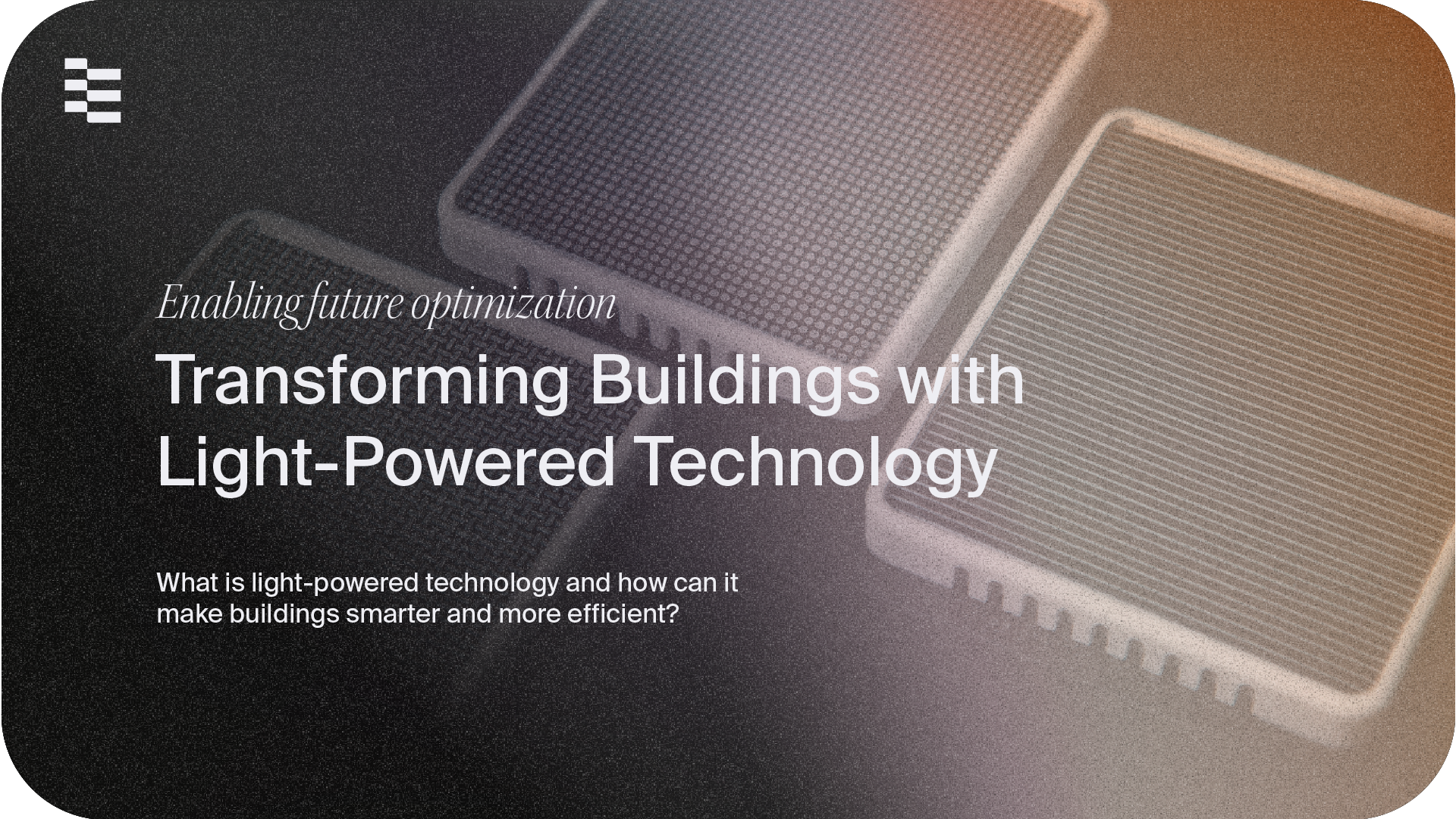
Transforming Buildings with Light-Powered Technology
In the world of property technology, one of the enablers for future optimization is light-power. Today's light-powered solutions go beyond capturing sunlight, utilizing advanced technology to convert indoor light into a sustainable energy source for sensors and electronics. But how does this technology work and how can it power devices like sensors, locks, and other electronics to make buildings smarter and more energy-efficient both immediately and in the long run?
What is Light-Powered Technology?
Light-powered operate on a simple principle: converting light into electrical power using materials that react to light. Solutions optimized for indoor light allow buildings to utilize existing indoor light to enhance the functionality and sustainability of their smart devices.
Practical Uses in Modern Buildings
- Sensors: Light can power sensors without the need for wires or batteries. Light-powered sensors monitor everything from room occupancy to environmental conditions, drawing power from the surrounding light. This ensures they're always powered, making buildings more responsive and adaptive, without the extra energy cost or hassle of replacing batteries.
- Locks: Electronic locks equipped with indoor solar cells function independently of the building's main power supply, similar to battery powered but without the hassle of battery replacements. They capture energy from indoor light, making them more reliable and sustainable. This is especially useful during power outages or in locations where wiring is impractical.
- Electronics: From information displays to automated blinds, integrating light power can make a variety of electronic devices more energy-efficient and with less need of maintenance. These integrations foster the development of highly efficient and responsive building systems.

The Advantages of Choosing Light-Powered Solutions
Light-powered technology offers a range of benefits that make it an attractive option for sustainable, cost-efficient, and dependable power solutions. This technology provides a sustainable alternative with a lower Life Cycle Assessment (LCA) compared to current power options, independent from traditional power sources and significantly cutting carbon footprints. Additionally, these devices reduce the need for frequent battery replacements or wired installations, which translates to lower maintenance costs. Moreover, the dependability of light-driven technology ensures that critical systems, such as security, operate uninterrupted, regardless of external power issues. This reliability makes light-powered technology an ideal choice for applications where consistent performance is crucial.